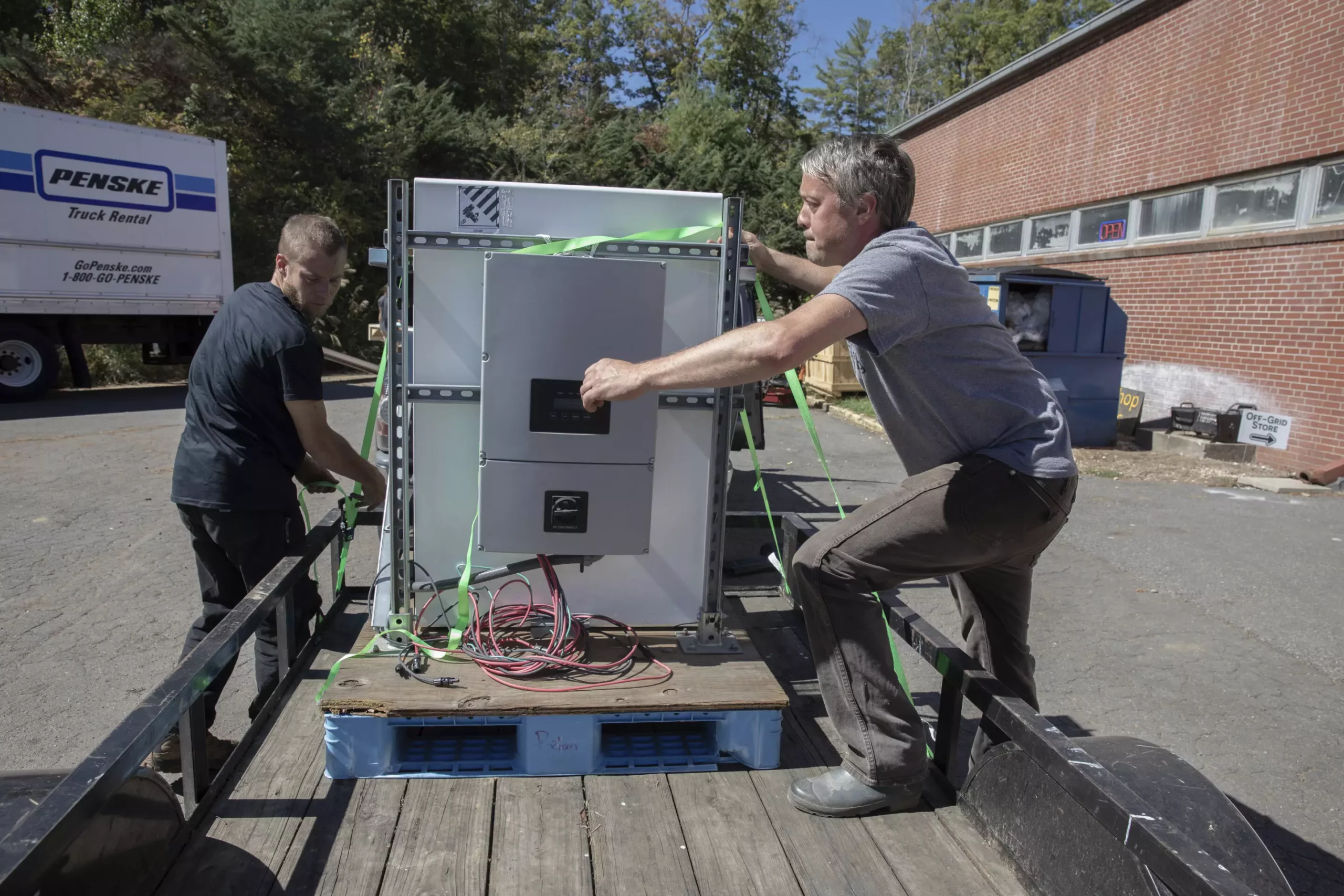In the wake of Hurricane Helene, the picturesque landscapes of North Carolina’s mountains have been transformed into a scene of despair and disarray. Power lines lay shattered, roads have been rendered impassable, and thousands of residents find themselves cut off from essential services. Among these individuals, Bobby Renfro’s story echoes the plight of many—a retired railroad worker turned community advocate, he has mobilized local efforts to assist those struggling in Tipton Hill, nestled in the heart of the Pisgah National Forest. As volunteers stream through his community resource hub—once a church—Renfro battles not only the inundation of noise from a gas-powered generator but also the unseen emotional toll of enduring a prolonged recovery period.
The financial weight of recovery has been burdensome too, with Renfro spending over $1,200 on the generator and additional thousands on fuel brought in by volunteers from across state lines. This persistent reliance on a generator underscores the dire situation; it not only powers life-sustaining medical equipment for diabetes patients and those reliant on oxygen but signifies a lifeline in a community that feels marooned. “We have no resources for nothing,” Renfro laments, illuminating both desperation and resilience in the wake of natural disaster.
The statistics paint a grim picture: at the time of this article, more than 43,000 customers among the 1.5 million who lost power in western North Carolina remained powerless. The implications of this are profound. The absence of electricity represents far more than mere inconvenience; it obstructs access to medical care, prevents the preservation of necessary medications, and cuts off communication pathways. Local and national crews have rallied, but the challenging topography complicates repair efforts, leading to a laborious restoration process akin to rebuilding from scratch rather than simple repairs.
For many residents, gas and diesel become vital commodities; however, environmental concerns loom large. Prolonged use of generators emits harmful fumes, and these machines were never intended for extended operation. As frustration mounts, a glimmer of hope begins to take shape. Recent efforts have introduced a cleaner, more sustainable energy approach into the equation.
Thanks largely to the nonprofit Footprint Project, which focuses on reducing the carbon footprint of emergency responses, residents like Renfro can envision a more sustainable future amid such adversity. Recently, he welcomed the installation of a solar generator equipped with six solar panels and an AC power inverter, significantly improving the situation in his hub. This moment marks a turning point, allowing residents a reprieve from the incessant noise and the ecological impact of traditional generators.
The Footprint Project is scaling its infrastructure to provide more comprehensive support to the community, having deployed dozens of solar generators, microgrids, and even machines capable of pulling moisture from the air. The endeavor reflects a shift toward harnessing renewable resources in disaster recovery, a necessary evolution in a world grappling with increasingly frequent and severe weather events.
Footprint Project’s operations extend beyond setting up solar solutions; they emphasize grassroots collaboration. The organization is spearheaded by husband-and-wife team Will Heegaard and Jamie Swezey, focused on nurturing community resilience while addressing immediate needs. Their response to Hurricane Helene embodies a multifaceted approach, integrating technology, local volunteerism, and the power of human connection. Meanwhile, local heroes continue to surface—volunteers, glassblowers from Asheville, and other community members rallying together to deliver much-needed supplies and support.
As efforts are mobilized, the complexity of the situation reveals itself. Each day presents new challenges; requests pour in regarding a multitude of needs ranging from oxygen machines for individuals to supporting makeshift clinics with power sources. The grassroots nature of the response highlights the importance of creating a strong local network that can adapt and respond to emerging needs.
While work is ongoing, the impact of historic disasters like Hurricane Helene resonates deeply. It influences future emergency responses and demonstrates the clear necessity of equitable, sustainable energy solutions for affected communities. The unfortunate memory of Hurricane Maria in Puerto Rico serves as a reminder that disaster recovery is a long-term commitment, and as Swezey points out, “We know there are people who will need help long after the power comes back.”
As North Carolina begins to pick up the pieces, the combination of community resilience and innovative, sustainable solutions is paramount. By focusing on renewable resources and the collective power of individuals coming together, the path forward holds promise—no matter how arduous it may be. The scars of Hurricane Helene will remain, but they may also pave the way for a stronger, more interconnected future.


Leave a Reply